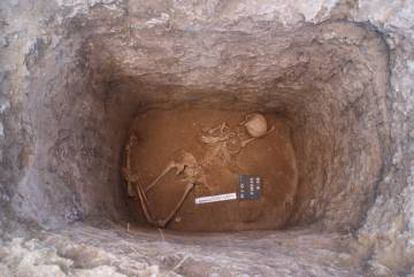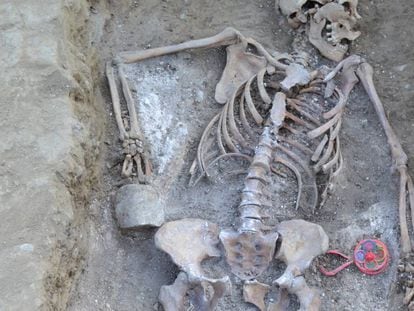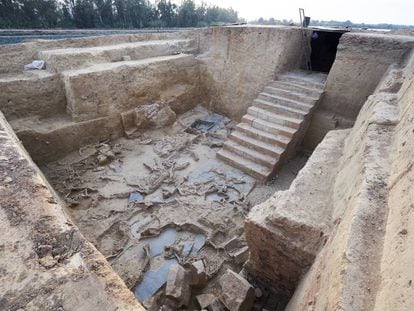Researchers probe 2,000-year-old killings on uninhabited Spanish islet
A joint investigation is being conducted on the remains of 10 bodies and a temple found in Sa Galera, off the coast of Palma de Mallorca in the Balearic Islands


The islet of Sa Galera is 170 meters off the coast of Palma de Mallorca, in Spain’s Balearic Islands. It is around 1,800 square meters – smaller than a soccer field – and has never been inhabited by humans, although it has been visited by people from many different cultures.

But while the islet may seem insignificant, it holds mysteries that Spanish archaeologists Ramón Martín and José Argüello have been puzzling over since 2012. Together with 80 volunteers, the researchers have spent nearly seven years excavating the site.
Some of the island’s mysteries have been solved but others remain – like who was responsible for the violent death of 10 people on the island 2,000 years ago, and why were the latter left inside various cavities on the island? Why were two pregnant women killed? And what is the story behind the body of the rich man?
Now, the Sa Galera research team is working with the universities of Cranfield, Uppsala, Stockholm and Oxford as well as Madrid’s Complutense University to look for answers in genetics. The research project is set to continue until 2024.

The first findings from the islet were discovered by archaeologist Lluis Plantalamor in 1967. But it was not until 2012, when researchers began to conduct a proper investigation, that remains were found of a small Chalcolithic funeral structure, dating back between 2,000 and 2,200 years, as well as 56 ceramic pieces from the time period.
The Carthaginians arrived on Sa Galera between the 4th and 3rd century BC and excavated a system of ritual cisterns and pipes, and a sacred temple measuring five by five meters. For the building, they used large dimension stones, up to 120 centimeters long and 70 centimeters wide, which were extracted from the islet: the quarry is still visible today. The building was four meters tall and could be seen from any point on the Bay of Palma.
Before the Second Punic War between the Carthaginians and the Romans (218-201), the temple was surrounded by an even larger structure measuring 10 by 10 meters. It was destroyed by a fire but was later rebuilt, only to be torn down again by the Romans. From this period, archaeologists have discovered a large number of Punic, Iberian, North African and Italic ceramic pieces that were left as temple offerings: eight coins, fish dishes, bowls and jugs. Almost all the pieces date back to the second century BC, including a well-conserved skeleton. Researchers have been able to determine that the skeleton belonged to a well-fed and possibly rich man, who was 1.65 meters tall and between 35 and 40 years old. Specialists have been able to reconstruct a bust of the man using this information.

The temple was in use until the Roman consul Cecilio Metelo conquered Mallorca in 123 BC. In the first century, when Hispania had been conquered by Rome, someone left 10 bodies, including that of a 22-year-old woman who was either nine months pregnant or the mother of a newborn baby. According to an anthropological study, the woman may have been mestiza (of mixed Sub-Saharan and Caucasian origin), a hypothesis that will be validated with a DNA test. Her face has been reconstructed thanks to the work of anthropologists and visual artists.
“It’s clear that they died in strange circumstances because their bodies were left haphazardly,” says Argüello. “The question is why? There is little possibility that their deaths were the result of a ritual and the investigation continues.”
So far, researchers have recovered and restored more than 200 metallic and ceramic pieces from the time period. No one else would step foot on the islet for more than 1,000 years until the Middle Ages. In the Modern Age, the islet remained unoccupied, largely due to its proximity to a slaughterhouse. And in the 20th century, it was only used as a shooting field by military troops, who did not realize they were shooting at a 4,000-year-old archaeological site. On the upside, the islet escaped the Mediterranean housing boom of the 1960s and 70s, and today remains almost intact. It even has a few mysteries it is yet to share.
English version by Melissa Kitson.












































